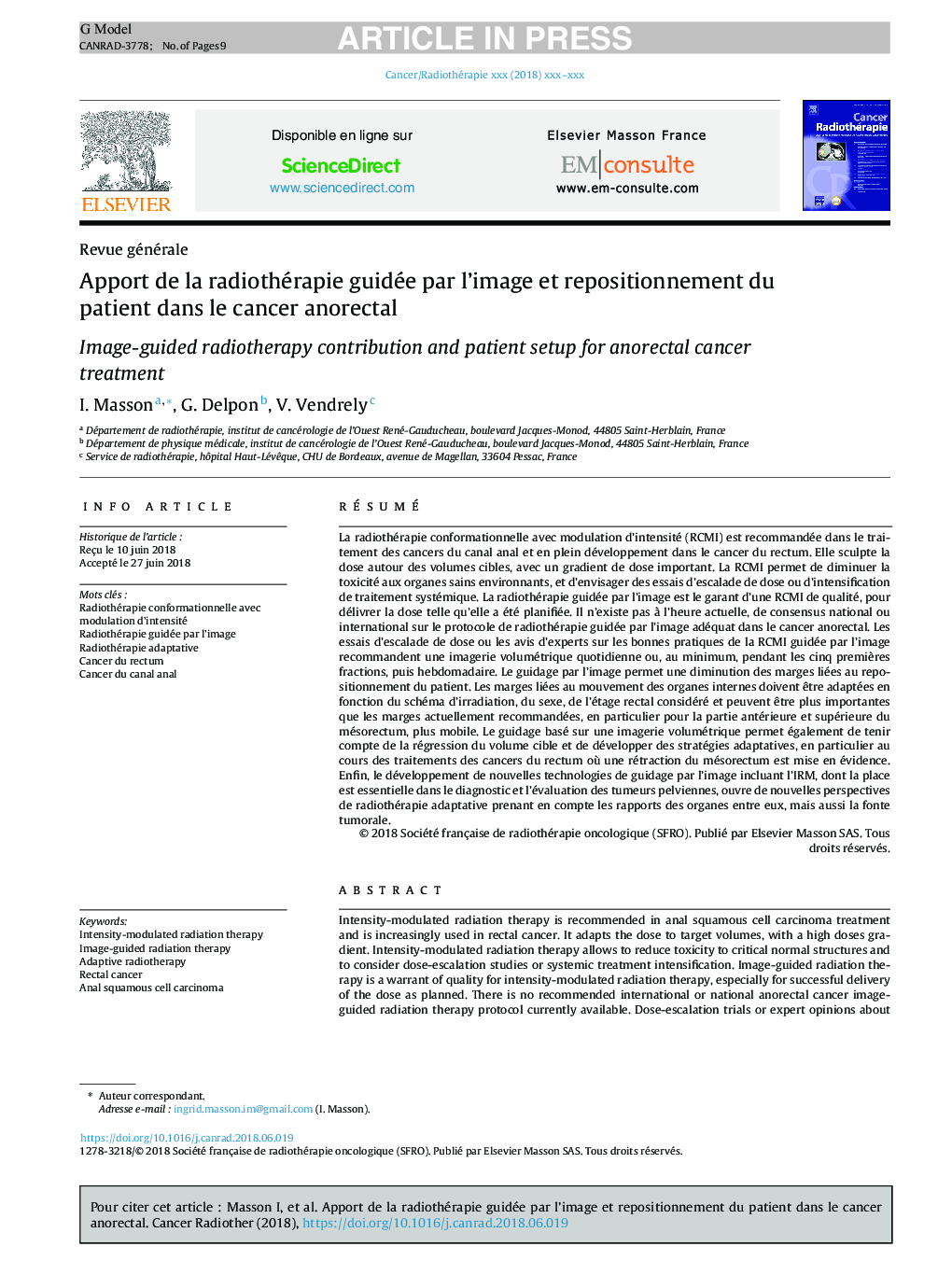| Article ID | Journal | Published Year | Pages | File Type |
|---|---|---|---|---|
| 10157540 | Cancer/Radiothérapie | 2018 | 9 Pages |
Abstract
Intensity-modulated radiation therapy is recommended in anal squamous cell carcinoma treatment and is increasingly used in rectal cancer. It adapts the dose to target volumes, with a high doses gradient. Intensity-modulated radiation therapy allows to reduce toxicity to critical normal structures and to consider dose-escalation studies or systemic treatment intensification. Image-guided radiation therapy is a warrant of quality for intensity-modulated radiation therapy, especially for successful delivery of the dose as planned. There is no recommended international or national anorectal cancer image-guided radiation therapy protocol currently available. Dose-escalation trials or expert opinions about intensity-modulated/image-guided radiation therapy good practice guidelines recommend daily volumetric imaging throughout the treatment or during the five first fractions and weekly thereafter as a minimum. Image-guided radiation therapy allows to reduce margins related to patient setup errors. Internal margin, related to the internal organ motion, needs to be adapted according to short- or long-course radiotherapy, gender, rectal location; it can be higher than current recommended planning target volume margins, particularly in the upper and anterior part of mesorectum, which has the most significant movement. Image-guided radiation therapy based on volumetric imaging allows to take target volume shrinkage into account and to develop adaptive strategies, in particular for mesorectum shrinkage during rectal cancer treatment. Lastly, the emergence of new image-guided radiation therapy technologies including MRI (which plays a major role in pelvic tumours assessment and diagnosis) opens up interesting perspectives for adaptive radiotherapy, taking into account both organs' movements and tumour shrinkage.
Keywords
Related Topics
Life Sciences
Biochemistry, Genetics and Molecular Biology
Cancer Research
Authors
I. Masson, G. Delpon, V. Vendrely,
